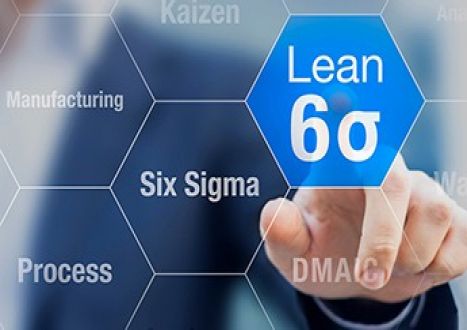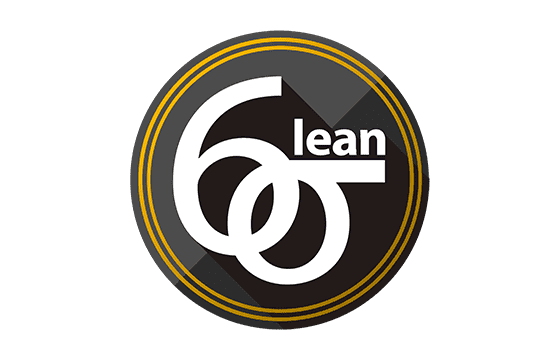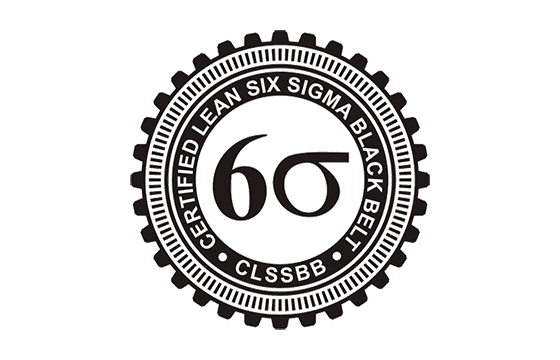Pass Your Six Sigma Lean Six Sigma Certification Easy!
Six Sigma Lean Six Sigma Certification Exams Questions & Answers, Accurate & Verified By IT Experts
Instant Download, Free Fast Updates, 99.6% Pass Rate.

$175.00
Or Purchase Lean Six Sigma Exams Individually
| LSSBB | Lean Six Sigma Black Belt | $69.99 | Add to cart |
| LSSGB | Lean Six Sigma Green Belt | $69.99 | Add to cart |
| LSSMBB | Lean Six Sigma Master Black Belt | $69.99 | Add to cart |
| LSSWB | Lean Six Sigma White Belt | $69.99 | Add to cart |
| LSSYB | Lean Six Sigma Yellow Belt | $69.99 | Add to cart |
Download Free Lean Six Sigma Practice Test Questions VCE Files
| Exam | Title | Files |
|---|---|---|
Exam LSSBB |
Title Lean Six Sigma Black Belt |
Files 5 |
Exam LSSGB |
Title Lean Six Sigma Green Belt |
Files 5 |
Exam LSSMBB |
Title Lean Six Sigma Master Black Belt |
Files 2 |
Exam LSSWB |
Title Lean Six Sigma White Belt |
Files 1 |
Exam LSSYB |
Title Lean Six Sigma Yellow Belt |
Files 6 |
Six Sigma Lean Six Sigma Certification Exam Dumps & Practice Test Questions
Prepare with top-notch Six Sigma Lean Six Sigma certification practice test questions and answers, vce exam dumps, study guide, video training course from ExamCollection. All Six Sigma Lean Six Sigma certification exam dumps & practice test questions and answers are uploaded by users who have passed the exam themselves and formatted them into vce file format.
Understanding Lean Six Sigma Methodology and Process Excellence
Six Sigma represents a transformative quality management philosophy that revolutionizes how organizations approach operational excellence and customer satisfaction. This methodology encompasses a comprehensive framework designed to enhance business process capabilities through systematic defect reduction and variation elimination. Organizations implementing Six Sigma principles experience remarkable improvements in their operational efficiency, customer loyalty, and financial performance. The methodology transcends traditional quality control approaches by focusing on data-driven decision making and statistical process control.
The fundamental premise of Six Sigma centers on achieving near-perfect quality levels through rigorous measurement and analysis. When a process operates at the coveted 6-sigma level, it produces merely 3.4 defects per million opportunities, representing an extraordinary achievement in quality management. This statistical benchmark demonstrates exceptional process capability and reflects an organization's commitment to delivering superior products and services to their clientele.
Process capability serves as the cornerstone of Six Sigma implementation, enabling organizations to quantify their current performance levels and establish realistic improvement targets. The methodology emphasizes understanding the intricate relationship between process inputs and outputs, recognizing that controlling input variables directly influences the quality and consistency of final outcomes. This holistic approach to process management distinguishes Six Sigma from conventional quality improvement initiatives.
Organizations embracing Six Sigma methodology witness substantial enhancements in employee morale, as team members become empowered with robust analytical tools and structured problem-solving techniques. The methodology fosters a culture of continuous improvement where every employee contributes to organizational excellence through their specialized knowledge and commitment to quality principles.
Origins and Evolution of Quality Excellence
The development of Six Sigma methodology emerged from decades of quality management evolution and statistical process control innovations. Manufacturing organizations initially pioneered these concepts as they sought to reduce production variability and enhance product reliability. The methodology's roots trace back to statistical quality control principles established in the early twentieth century, when industrialists recognized the critical importance of measurement-driven improvement strategies.
Early quality pioneers understood that variation represents the enemy of consistent performance and customer satisfaction. Their groundbreaking work established the theoretical foundation for what would eventually evolve into the comprehensive Six Sigma methodology. These visionary leaders recognized that sustainable competitive advantage requires systematic approaches to quality management rather than sporadic improvement efforts.
The mathematical foundation of Six Sigma relies heavily on normal distribution principles and statistical process control techniques. Process capability indices provide quantitative measures of how well processes perform relative to customer specifications and requirements. These statistical tools enable organizations to predict future performance levels and identify opportunities for systematic improvement.
Manufacturing excellence became the initial proving ground for Six Sigma principles, as organizations discovered the profound impact of reduced variation on customer satisfaction and profitability. The methodology's success in manufacturing environments demonstrated its universal applicability across diverse industry sectors and business functions. Service organizations subsequently adapted these principles to their unique operational requirements, expanding the methodology's reach beyond traditional manufacturing applications.
Quality management evolution continues to influence Six Sigma development, as organizations discover innovative applications for statistical process control and data-driven decision making. The methodology's flexibility allows for customization based on specific industry requirements and organizational cultures, ensuring widespread adoption across various business sectors.
Contemporary Six Sigma implementations incorporate advanced analytical techniques and sophisticated measurement systems that enable real-time process monitoring and control. These technological enhancements amplify the methodology's effectiveness while reducing implementation complexity for organizations seeking quality excellence.
Fundamental Principles and Core Concepts
Six Sigma methodology operates on several fundamental principles that guide successful implementation and sustained improvement efforts. Customer focus represents the primary driving force behind all Six Sigma initiatives, ensuring that improvement efforts align with customer expectations and requirements. Organizations must clearly understand their customers' definitions of quality and value before initiating any improvement projects.
Data-driven decision making constitutes another essential principle, requiring organizations to base their improvement efforts on factual evidence rather than assumptions or intuition. This approach eliminates guesswork from quality improvement initiatives and ensures that resources are allocated to projects with the greatest potential impact on customer satisfaction and organizational performance.
Process thinking forms the intellectual foundation of Six Sigma methodology, encouraging organizations to view their operations as interconnected systems of activities that transform inputs into outputs. This perspective enables systematic identification of improvement opportunities and facilitates comprehensive understanding of how changes in one process area might affect other organizational functions.
Variation reduction serves as the tactical focus of Six Sigma implementation, recognizing that consistency represents a critical component of customer satisfaction. Processes exhibiting high variation levels inevitably produce defective outputs that fail to meet customer expectations, leading to decreased satisfaction and potential revenue loss.
Statistical process control provides the analytical framework for measuring current performance levels and monitoring improvement progress. Control charts, capability studies, and process performance indices enable organizations to quantify their quality levels and establish realistic improvement targets. These statistical tools facilitate objective evaluation of improvement initiatives and ensure that organizations maintain their gains over time.
Continuous improvement philosophy permeates every aspect of Six Sigma implementation, encouraging organizations to view quality enhancement as an ongoing journey rather than a destination. This mindset promotes sustained excellence and prevents organizations from becoming complacent about their current performance levels.
Collaborative teamwork represents an indispensable element of successful Six Sigma programs, bringing together diverse expertise and perspectives to address complex quality challenges. Cross-functional teams leverage collective knowledge and experience to develop innovative solutions that individual contributors might not discover working independently.
Organizational Implementation Strategies
Successful Six Sigma implementation requires comprehensive planning and systematic deployment throughout the organization. Leadership commitment represents the most critical factor in determining implementation success, as executives must demonstrate unwavering support for quality improvement initiatives and provide necessary resources for team training and project execution.
Strategic alignment ensures that Six Sigma projects directly contribute to organizational objectives and customer satisfaction goals. Organizations must carefully select improvement opportunities that deliver maximum value while building momentum for broader methodology adoption. This strategic approach prevents resources from being wasted on projects with minimal impact on overall organizational performance.
Training and development programs equip employees with essential analytical skills and problem-solving techniques required for effective Six Sigma implementation. Comprehensive education ensures that team members understand statistical concepts, measurement principles, and improvement methodologies necessary for successful project completion.
Infrastructure development supports ongoing Six Sigma activities through establishment of measurement systems, data collection procedures, and communication protocols. Organizations must invest in appropriate technology and systems that enable efficient project management and progress monitoring throughout their improvement initiatives.
Change management strategies address the natural resistance that employees may exhibit when confronting new quality requirements and performance expectations. Effective communication and employee engagement programs help organizations overcome implementation barriers while building enthusiasm for quality improvement activities.
Resource allocation decisions significantly impact Six Sigma program effectiveness, as organizations must balance improvement project requirements with operational responsibilities. Careful planning ensures that quality initiatives receive adequate attention without disrupting essential business functions or customer service levels.
Cultural transformation represents the ultimate goal of Six Sigma implementation, creating an organizational environment where quality excellence becomes ingrained in daily operations and decision-making processes. This cultural shift ensures that quality improvements become sustainable and self-reinforcing rather than temporary gains that erode over time.
Statistical Analysis and Measurement Systems
Statistical analysis forms the analytical backbone of Six Sigma methodology, providing quantitative tools for measuring current performance levels and evaluating improvement progress. Process capability studies enable organizations to understand how well their current processes meet customer specifications and identify specific areas requiring enhancement. These analytical techniques transform subjective quality assessments into objective, measurable metrics.
Measurement system analysis ensures that data collection procedures provide accurate and reliable information for decision-making purposes. Organizations must verify that their measurement systems exhibit adequate precision and accuracy before using collected data for improvement initiatives. Inadequate measurement systems can lead to incorrect conclusions and misdirected improvement efforts.
Control charts provide visual representations of process performance over time, enabling organizations to distinguish between normal process variation and special causes that require immediate attention. These graphical tools facilitate rapid identification of process changes and support timely corrective actions before quality problems escalate.
Process performance indices quantify the relationship between process variation and customer specifications, providing standardized metrics for comparing different processes and tracking improvement progress. These indices enable organizations to prioritize improvement opportunities based on their potential impact on customer satisfaction and business performance.
Design of experiments methodology enables systematic investigation of process variables and their effects on output quality. This analytical approach helps organizations identify optimal process settings and understand how different input variables interact to influence final product characteristics.
Statistical software applications facilitate complex analytical calculations and enable sophisticated data visualization techniques that enhance understanding of process behavior. These technological tools democratize statistical analysis by making advanced techniques accessible to employees without extensive mathematical backgrounds.
Hypothesis testing procedures provide structured approaches for evaluating proposed improvements and determining whether observed changes represent genuine enhancements or random variation. This scientific methodology ensures that organizations base their improvement decisions on statistically significant evidence rather than anecdotal observations.
Process Improvement Methodologies
The DMAIC framework provides a structured approach to Six Sigma process improvement that guides teams through systematic problem-solving activities. Define phase activities establish project scope, customer requirements, and success criteria while forming the project team and securing necessary resources. This initial phase ensures that improvement efforts focus on problems with genuine business impact and customer relevance.
Measure phase activities concentrate on quantifying current process performance and establishing baseline metrics for improvement evaluation. Teams develop comprehensive measurement plans that capture both process outputs and key input variables that influence quality levels. Data collection procedures must ensure statistical validity while minimizing disruption to normal business operations.
Analyze phase investigations identify root causes of quality problems through statistical analysis and process examination. Teams employ various analytical tools including fishbone diagrams, regression analysis, and correlation studies to understand the underlying factors contributing to defect generation. This thorough analysis prevents teams from implementing solutions that address symptoms rather than fundamental causes.
Improve phase activities focus on developing and implementing solutions that address identified root causes while optimizing process performance. Teams design experiments to validate proposed improvements and ensure that implemented changes deliver expected benefits without creating unintended consequences in other process areas.
Control phase measures sustain improvements through monitoring systems and standard operating procedures that prevent regression to previous performance levels. Organizations establish control charts and measurement protocols that enable rapid detection of performance degradation and facilitate immediate corrective actions.
Alternative improvement methodologies within Six Sigma include DMADV for new process design and various specialized approaches for specific industry applications. These frameworks adapt basic Six Sigma principles to unique organizational requirements while maintaining focus on data-driven improvement and customer satisfaction enhancement.
Project management discipline ensures that Six Sigma initiatives remain focused on deliverable outcomes and complete within established timeframes and budget constraints. Effective project management prevents scope creep while maintaining momentum throughout the improvement process.
Quality Management Integration
Six Sigma methodology integrates seamlessly with existing quality management systems and enhances their effectiveness through statistical rigor and systematic improvement approaches. Organizations operating under international quality standards find that Six Sigma provides additional analytical depth while supporting compliance requirements and audit procedures.
Total Quality Management principles align naturally with Six Sigma objectives, creating synergistic effects that amplify improvement results. The combination of cultural transformation emphasized by TQM and analytical sophistication provided by Six Sigma creates powerful improvement capabilities that exceed what either approach could achieve independently.
Lean manufacturing integration creates comprehensive operational excellence programs that simultaneously eliminate waste and reduce variation. This combined approach addresses both efficiency and quality concerns while optimizing resource utilization throughout organizational processes. The integration enables organizations to achieve breakthrough performance improvements that satisfy multiple stakeholder requirements.
Quality assurance functions benefit significantly from Six Sigma analytical tools and measurement techniques. Traditional inspection-based quality control evolves into predictive quality management that prevents defects rather than detecting them after occurrence. This proactive approach reduces costs while enhancing customer satisfaction through improved product reliability.
Supplier quality management incorporates Six Sigma principles to ensure that external partners maintain performance levels consistent with organizational quality standards. Supplier development programs utilizing Six Sigma tools create collaborative relationships that benefit all parties while enhancing overall supply chain performance.
Risk management strategies benefit from Six Sigma analytical approaches that quantify potential failure modes and their likelihood of occurrence. This statistical perspective on risk assessment enables organizations to allocate preventive resources effectively while minimizing exposure to quality-related business disruptions.
Regulatory compliance requirements become more manageable through Six Sigma documentation and measurement systems that provide comprehensive evidence of process control and improvement activities. These systematic approaches satisfy regulatory expectations while supporting organizational improvement objectives.
Benefits and Organizational Impact
Organizations implementing Six Sigma methodology experience substantial improvements in financial performance through reduced operational costs and enhanced revenue generation capabilities. Defect reduction directly translates to decreased rework expenses, warranty costs, and customer service requirements while improving resource utilization efficiency throughout organizational operations.
Customer satisfaction enhancements result from more consistent product and service delivery that meets or exceeds expectations. Reduced variation ensures that customers receive predictable quality levels, building trust and loyalty that translates into increased market share and revenue opportunities. Enhanced reputation for quality excellence creates competitive advantages that are difficult for competitors to replicate.
Employee engagement increases significantly as team members gain analytical skills and problem-solving capabilities that enhance their professional development and job satisfaction. Six Sigma training provides valuable career advancement opportunities while empowering employees to contribute meaningfully to organizational improvement efforts.
Operational efficiency improvements emerge from streamlined processes that eliminate non-value-added activities and optimize resource allocation. Six Sigma analysis frequently reveals hidden inefficiencies and identifies opportunities for process simplification that reduce cycle times and operational complexity.
Innovation capabilities expand as organizations develop deeper understanding of process relationships and customer requirements. Six Sigma analytical tools provide insights that inspire creative solutions and enable breakthrough improvements that would be difficult to achieve through conventional improvement approaches.
Market competitiveness strengthens as organizations deliver superior quality at competitive prices while maintaining operational flexibility to respond to changing customer requirements. Six Sigma capabilities enable rapid process optimization that supports new product introductions and market expansion initiatives.
Long-term sustainability results from embedded quality management systems that maintain improvement gains while supporting continuous enhancement activities. Organizations develop institutional knowledge and analytical capabilities that ensure lasting benefits from their Six Sigma investments.
Six Sigma Methodology Evolution in Modern Business Landscapes
The contemporary business environment demands sophisticated quality management frameworks that transcend traditional operational boundaries. Six Sigma methodology has undergone remarkable metamorphosis from its manufacturing origins to become an indispensable strategic instrument for organizational transformation across multitudinous industries. This comprehensive examination explores the intricate applications, technological integrations, and future trajectories of Six Sigma implementation in diverse operational ecosystems.
Modern enterprises recognize Six Sigma as more than a quality improvement initiative; it represents a philosophical paradigm shift toward data-driven decision-making and customer-centric operational excellence. The methodology's statistical foundation provides organizations with quantitative tools to identify, analyze, and eliminate variability that undermines performance consistency. Through systematic application of DMAIC (Define, Measure, Analyze, Improve, Control) frameworks, organizations achieve unprecedented levels of operational sophistication and customer satisfaction.
The proliferation of Six Sigma across service-oriented sectors demonstrates its remarkable adaptability and universal applicability. Financial institutions leverage Six Sigma principles to streamline transactional processes, reduce error rates, and enhance customer experience delivery. Healthcare organizations implement these methodologies to improve patient safety protocols, reduce medical errors, and optimize resource utilization while maintaining exceptional care standards.
Government agencies increasingly adopt Six Sigma approaches to enhance public service delivery, reduce bureaucratic inefficiencies, and improve citizen satisfaction metrics. Educational institutions apply these principles to improve student outcomes, streamline administrative processes, and enhance educational service quality. The methodology's flexibility enables customization to accommodate sector-specific requirements while maintaining statistical rigor and analytical precision.
Revolutionary Digital Transformation Integration Strategies
Digital transformation initiatives benefit exponentially from Six Sigma analytical frameworks that optimize technology implementation trajectories and accelerate user adoption processes. Organizations experiencing digital metamorphosis encounter numerous challenges including legacy system integration complexities, user resistance patterns, and technological performance inconsistencies. Six Sigma methodologies provide structured approaches to address these challenges through systematic analysis and iterative improvement cycles.
Technology implementation projects frequently suffer from inadequate planning, insufficient stakeholder engagement, and poor change management strategies. Six Sigma principles enable organizations to establish baseline performance metrics, identify critical success factors, and develop comprehensive implementation roadmaps that minimize disruption while maximizing technological benefits. The methodology's emphasis on customer voice ensures that technology solutions align with user requirements and organizational objectives.
Data analytics capabilities inherent in Six Sigma frameworks support digital initiatives by providing quantitative assessment tools for technology performance evaluation. Organizations can measure user adoption rates, system performance metrics, and business impact indicators to ensure that technological investments deliver measurable improvements in operational efficiency and customer experience quality. Statistical analysis reveals hidden patterns and correlation relationships that inform strategic technology decisions.
User experience optimization through Six Sigma principles ensures that digital platforms meet or exceed customer expectations while maintaining operational efficiency standards. Interface design improvements, navigation simplification, and performance enhancement initiatives benefit from systematic testing and validation approaches that characterize Six Sigma implementation strategies.
Cloud migration projects particularly benefit from Six Sigma planning methodologies that address security concerns, performance requirements, and cost optimization objectives simultaneously. The structured approach enables organizations to identify potential migration risks, develop mitigation strategies, and establish monitoring protocols that ensure successful cloud adoption outcomes.
Cybersecurity enhancement initiatives leverage Six Sigma analytical tools to identify vulnerability patterns, assess threat landscapes, and develop comprehensive security protocols. The methodology's systematic approach enables organizations to establish security baselines, monitor threat indicators, and implement continuous improvement processes that adapt to evolving cybersecurity challenges.
Digital workforce transformation requires sophisticated change management strategies that Six Sigma methodologies facilitate through stakeholder analysis, communication optimization, and training program development. Organizations can measure employee digital competency levels, identify skill development requirements, and implement targeted training initiatives that accelerate digital adoption across organizational hierarchies.
Artificial Intelligence and Machine Learning Convergence
Artificial intelligence integration creates unprecedented opportunities for automated defect detection and predictive quality management that exponentially enhance traditional Six Sigma capabilities. Machine learning algorithms possess the computational capacity to identify subtle patterns in process data that frequently escape human analytical capabilities while enabling real-time process optimization and autonomous control mechanisms.
Predictive analytics powered by machine learning models enable organizations to anticipate quality issues before they manifest in production environments. These sophisticated algorithms analyze historical performance data, identify correlation patterns, and generate predictive models that forecast potential quality deviations. Organizations can implement proactive corrective measures that prevent defects rather than responding reactively to quality problems after they occur.
Automated monitoring systems equipped with artificial intelligence capabilities continuously assess process parameters and quality indicators without human intervention. These systems can detect anomalies, trigger corrective actions, and optimize process settings automatically to maintain optimal performance standards. The integration reduces reliance on manual monitoring while improving detection accuracy and response times significantly.
Natural language processing technologies enable automated analysis of customer feedback, warranty claims, and service reports to identify emerging quality trends and customer satisfaction patterns. Organizations can process vast volumes of unstructured customer data to extract actionable insights that inform quality improvement initiatives and product development strategies.
Computer vision applications revolutionize quality inspection processes by providing automated defect detection capabilities that exceed human visual inspection accuracy. Machine learning models trained on defect patterns can identify subtle quality variations that manual inspection might miss while maintaining consistent inspection standards regardless of operator fatigue or environmental conditions.
Robotic process automation combined with Six Sigma principles streamlines repetitive quality control tasks while reducing human error potential and improving inspection consistency. Automated testing protocols can execute complex quality verification sequences with mathematical precision while generating detailed performance documentation for statistical analysis and continuous improvement purposes.
Deep learning algorithms analyze complex multivariate process relationships that traditional statistical methods struggle to comprehend fully. These advanced analytical capabilities enable organizations to optimize multiple process parameters simultaneously while maintaining quality standards and operational efficiency targets.
Supply Chain Resilience and Global Optimization
Supply chain optimization utilizing Six Sigma principles creates remarkably resilient networks that consistently deliver superior performance despite external disruptions, market volatility, and geopolitical uncertainties. Contemporary global supply chains face unprecedented complexity challenges requiring sophisticated management approaches that traditional methodologies cannot adequately address.
Vendor management programs enhanced by Six Sigma methodologies establish rigorous supplier qualification protocols that ensure consistent quality standards across diverse supplier networks. Organizations can evaluate supplier capabilities using statistical criteria, monitor performance metrics continuously, and implement improvement initiatives that elevate supplier performance to world-class standards. These comprehensive approaches reduce supply chain risks while improving overall quality consistency.
Inventory optimization through Six Sigma analytical tools enables organizations to minimize carrying costs while maintaining adequate stock levels to meet customer demand fluctuations. Statistical forecasting models analyze demand patterns, seasonal variations, and market trends to establish optimal inventory strategies that balance cost efficiency with service level requirements.
Transportation and logistics networks benefit from Six Sigma process optimization that reduces delivery times, minimizes transportation costs, and improves on-time delivery performance. Route optimization algorithms, carrier performance analysis, and delivery process standardization contribute to enhanced customer satisfaction while reducing operational expenses.
Quality assurance protocols implemented throughout global supply chains ensure consistent product quality regardless of manufacturing location or supplier diversity. Standardized testing procedures, quality certification requirements, and continuous monitoring systems create seamless quality management across international boundaries and cultural contexts.
Risk management strategies incorporating Six Sigma analytical approaches enable organizations to identify potential supply chain vulnerabilities, assess impact probabilities, and develop comprehensive mitigation plans. Scenario analysis, contingency planning, and alternative supplier identification reduce supply chain disruption risks while maintaining operational continuity during crisis situations.
Supplier development programs based on Six Sigma principles enable organizations to elevate supplier capabilities through collaborative improvement initiatives. These programs provide training, technical assistance, and performance monitoring support that transforms supplier relationships from transactional arrangements into strategic partnerships focused on mutual success and continuous improvement.
Sustainability and Environmental Excellence Integration
Sustainability initiatives align seamlessly with Six Sigma waste reduction and efficiency improvement objectives, creating substantial environmental benefits alongside operational enhancements and cost reduction achievements. Contemporary organizations face increasing pressure to demonstrate environmental stewardship while maintaining competitive performance standards and profitability requirements.
Resource optimization inherent in Six Sigma methodology supports corporate social responsibility goals while simultaneously reducing operational costs and environmental impact. Waste elimination principles target all forms of organizational waste including material consumption, energy utilization, water usage, and time inefficiencies that collectively contribute to environmental degradation.
Energy efficiency improvement programs utilizing Six Sigma analytical tools identify consumption patterns, optimize equipment performance, and implement conservation strategies that reduce environmental footprint while lowering operational expenses. Statistical analysis reveals energy waste sources that traditional monitoring approaches might overlook, enabling targeted improvement initiatives with measurable environmental and financial benefits.
Circular economy principles integrate naturally with Six Sigma waste elimination objectives to create closed-loop systems that maximize resource utilization while minimizing environmental impact. Organizations can design processes that recover, reuse, and recycle materials throughout production cycles, reducing dependency on virgin resources while creating additional revenue streams from waste byproducts.
Carbon footprint reduction initiatives benefit from Six Sigma measurement and improvement methodologies that establish baseline emissions, identify reduction opportunities, and implement systematic improvement programs. Organizations can track progress toward sustainability goals using statistical process control techniques while ensuring that environmental improvements do not compromise operational performance standards.
Green supply chain management incorporating Six Sigma principles enables organizations to evaluate supplier environmental performance, implement sustainable procurement policies, and create environmentally responsible supply networks. Supplier scorecards include environmental criteria alongside traditional quality and delivery metrics to drive sustainability throughout extended enterprise networks.
Water conservation programs enhanced by Six Sigma analytical approaches identify consumption patterns, detect leakage sources, and optimize usage efficiency across organizational facilities. Statistical monitoring systems enable real-time consumption tracking while automated control systems minimize waste through precise usage management and recycling optimization.
Innovation Management and Research Development Acceleration
Innovation management processes benefit tremendously from Six Sigma analytical rigor applied to research and development activities that traditionally rely on intuition and experiential knowledge rather than systematic analytical approaches. Contemporary organizations require structured methodologies to manage innovation investments while accelerating time-to-market performance and reducing development risks.
Statistical design of experiments accelerates product development cycles while reducing development costs and shortening time-to-market intervals for new product introductions. Experimental design methodologies enable organizations to evaluate multiple design variables simultaneously while minimizing resource requirements and testing duration. These approaches identify optimal design configurations more efficiently than traditional trial-and-error development methods.
Portfolio management strategies incorporating Six Sigma analytical tools enable organizations to evaluate innovation investments using quantitative criteria that balance risk exposure with potential returns. Statistical models assess project success probabilities, resource requirements, and market potential to optimize innovation portfolio composition and resource allocation decisions.
Customer insight generation through Six Sigma voice-of-customer methodologies ensures that innovation efforts align with market requirements and customer preferences. Structured data collection, statistical analysis, and customer segmentation techniques reveal unmet needs and market opportunities that inform product development strategies and feature prioritization decisions.
Intellectual property management benefits from Six Sigma process optimization that streamlines patent application procedures, reduces filing costs, and improves approval success rates. Systematic approaches to prior art analysis, patent landscape evaluation, and filing strategy development enhance intellectual property portfolio value while reducing legal risks and administrative overhead.
Technology transfer processes incorporating Six Sigma principles facilitate efficient knowledge transfer from research environments to commercial production settings. Standardized procedures, documentation requirements, and validation protocols ensure that research innovations translate successfully into manufacturable products that meet quality and performance specifications.
Collaborative innovation networks enhanced by Six Sigma methodologies enable organizations to manage complex partnerships with external research institutions, suppliers, and customers. Structured collaboration protocols, intellectual property agreements, and performance measurement systems create productive innovation ecosystems that accelerate development while protecting organizational interests.
Healthcare Quality Excellence and Patient Safety
Healthcare organizations implement Six Sigma methodologies to improve patient safety protocols, reduce medical errors, and optimize resource utilization while maintaining exceptional care standards that meet or exceed regulatory requirements. Healthcare quality management faces unique challenges including life-critical consequences, complex regulatory environments, and diverse stakeholder requirements that demand sophisticated analytical approaches.
Patient flow optimization through Six Sigma process analysis reduces waiting times, improves resource utilization, and enhances patient experience quality throughout healthcare delivery systems. Statistical analysis identifies bottlenecks, capacity constraints, and scheduling inefficiencies that compromise patient satisfaction while increasing operational costs and staff workload pressures.
Medical error reduction initiatives leverage Six Sigma root cause analysis methodologies to identify systemic failures, human error patterns, and process vulnerabilities that contribute to adverse patient events. Comprehensive error analysis enables healthcare organizations to implement targeted improvements that address underlying causes rather than treating symptoms of quality problems.
Pharmaceutical management systems enhanced by Six Sigma principles ensure accurate medication administration while reducing drug interaction risks and dosage errors. Systematic procedures, verification protocols, and monitoring systems create multiple safeguards that protect patient safety while streamlining medication delivery processes.
Clinical pathway standardization through Six Sigma approaches improves treatment consistency, reduces outcome variability, and enhances resource efficiency across diverse medical specialties and treatment protocols. Evidence-based pathway development incorporates best practices while accommodating individual patient requirements and clinical circumstances.
Healthcare cost management initiatives utilizing Six Sigma analytical tools identify expense reduction opportunities without compromising patient care quality or safety standards. Resource optimization, waste elimination, and efficiency improvements create sustainable cost reductions that support healthcare accessibility while maintaining financial viability.
Infection control programs benefit from Six Sigma monitoring and improvement methodologies that reduce healthcare-associated infections while maintaining operational efficiency standards. Statistical surveillance systems detect infection patterns, identify risk factors, and enable targeted intervention strategies that protect patient safety while optimizing resource allocation.
Financial Services Excellence and Risk Management
Financial institutions leverage Six Sigma principles to streamline transactional processes, reduce error rates, and enhance customer experience delivery while maintaining regulatory compliance and risk management standards. Financial services face unique challenges including regulatory complexity, cybersecurity threats, and customer experience expectations that require sophisticated quality management approaches.
Loan processing optimization through Six Sigma methodologies reduces approval times, improves documentation accuracy, and enhances customer satisfaction while maintaining appropriate risk assessment standards. Systematic process analysis identifies bottlenecks, redundancies, and quality issues that delay loan approvals while increasing operational costs and customer dissatisfaction.
Fraud detection systems enhanced by Six Sigma analytical capabilities improve accuracy while reducing false positive rates that inconvenience legitimate customers. Statistical models analyze transaction patterns, identify anomalous behaviors, and generate risk scores that enable targeted investigation efforts while minimizing customer disruption.
Customer onboarding processes streamlined through Six Sigma principles reduce completion times, improve documentation quality, and enhance customer experience while maintaining regulatory compliance requirements. Standardized procedures, verification protocols, and quality checkpoints create efficient onboarding experiences that satisfy both customer expectations and regulatory obligations.
Investment portfolio management incorporating Six Sigma risk assessment methodologies enables financial institutions to optimize returns while maintaining appropriate risk exposure levels. Statistical analysis of market conditions, asset performance patterns, and correlation relationships informs portfolio construction decisions that balance client objectives with institutional risk tolerance.
Regulatory compliance programs benefit from Six Sigma systematic approaches that ensure consistent adherence to complex regulatory requirements while minimizing compliance costs and administrative burden. Structured documentation, monitoring systems, and audit protocols create comprehensive compliance frameworks that protect institutions from regulatory penalties while streamlining compliance operations.
Customer service quality enhancement through Six Sigma voice-of-customer methodologies improves satisfaction scores while reducing service delivery costs and response times. Systematic analysis of customer interactions, complaint patterns, and service quality metrics enables targeted improvements that address customer pain points while optimizing service delivery efficiency.
Technology Infrastructure and Performance Optimization
Information technology infrastructure management enhanced by Six Sigma principles creates robust systems that deliver consistent performance while minimizing downtime, security vulnerabilities, and maintenance costs. Contemporary organizations depend increasingly on technology systems that must perform flawlessly to support business operations and customer service delivery.
Network performance optimization through Six Sigma analytical tools identifies capacity bottlenecks, latency sources, and reliability issues that compromise system performance and user experience quality. Statistical monitoring systems enable real-time performance assessment while automated optimization algorithms maintain optimal network configurations despite changing usage patterns and traffic loads.
Database management systems incorporating Six Sigma methodologies improve query performance, reduce storage requirements, and enhance data integrity while maintaining security standards and backup protocols. Systematic database optimization, index management, and performance tuning create efficient data environments that support organizational decision-making requirements.
Cybersecurity enhancement initiatives leveraging Six Sigma analytical approaches strengthen defense mechanisms while reducing false alarm rates and security incident response times. Threat analysis, vulnerability assessment, and incident response optimization create comprehensive security frameworks that protect organizational assets while minimizing operational disruption.
Software development lifecycle optimization through Six Sigma principles reduces defect rates, accelerates delivery schedules, and improves code quality while maintaining functionality requirements and user experience standards. Systematic testing procedures, code review protocols, and quality assurance frameworks ensure that software products meet specifications while satisfying user expectations.
Cloud infrastructure management enhanced by Six Sigma methodologies optimizes resource utilization, reduces operational costs, and improves service reliability while maintaining security standards and compliance requirements. Capacity planning, performance monitoring, and cost optimization strategies create efficient cloud environments that support organizational scalability and growth objectives.
Disaster recovery planning incorporating Six Sigma risk assessment approaches ensures business continuity while minimizing recovery time objectives and data loss potential. Comprehensive backup strategies, testing protocols, and recovery procedures create resilient systems that protect organizational operations during crisis situations while maintaining customer service continuity.
Manufacturing Excellence and Production Innovation
Manufacturing organizations continue to derive substantial benefits from Six Sigma implementation despite the methodology's evolution toward service industry applications. Contemporary manufacturing environments face increasing complexity including product customization requirements, regulatory compliance obligations, and global competition pressures that demand sophisticated quality management approaches.
Production line optimization through Six Sigma analytical tools eliminates bottlenecks, reduces cycle times, and improves throughput while maintaining quality standards and safety requirements. Statistical process control techniques monitor performance parameters continuously while automated adjustment systems maintain optimal production conditions despite material variations and equipment performance fluctuations.
Quality control enhancement initiatives leverage Six Sigma measurement systems to improve defect detection accuracy, reduce inspection costs, and accelerate quality verification processes. Advanced statistical sampling techniques, automated testing equipment, and real-time monitoring systems create comprehensive quality assurance frameworks that exceed traditional inspection capabilities.
Equipment maintenance optimization incorporating Six Sigma predictive analytics reduces unplanned downtime, extends equipment lifespan, and minimizes maintenance costs while maintaining production schedule reliability. Condition monitoring systems, statistical failure analysis, and preventive maintenance optimization create maintenance strategies that balance cost efficiency with operational reliability requirements.
Lean manufacturing integration with Six Sigma principles creates powerful hybrid methodologies that eliminate waste while improving quality consistency and operational efficiency. Combined approaches address both efficiency and quality objectives simultaneously while creating organizational cultures focused on continuous improvement and customer value creation.
Product design improvement through Six Sigma design-for-manufacturability principles reduces production complexity, minimizes material requirements, and improves product reliability while maintaining functionality and aesthetic requirements. Statistical design optimization, failure mode analysis, and reliability testing ensure that products meet customer expectations while supporting efficient manufacturing processes.
Supplier quality management programs enhanced by Six Sigma methodologies create consistent quality standards across global supplier networks while reducing incoming material defect rates and supplier development costs. Comprehensive supplier auditing, performance monitoring, and improvement collaboration create strategic partnerships that benefit all stakeholders while maintaining competitive supply chain advantages.
Customer Experience Excellence and Service Quality
Customer experience optimization represents one of the most impactful applications of Six Sigma methodology in contemporary business environments. Organizations recognize that customer satisfaction directly correlates with business success, making customer experience improvement a strategic imperative rather than operational consideration.
Service delivery standardization through Six Sigma principles ensures consistent customer experience quality across multiple service channels, geographic locations, and interaction touchpoints. Standardized procedures, training protocols, and quality monitoring systems create predictable service experiences that meet or exceed customer expectations while maintaining operational efficiency standards.
Customer journey mapping enhanced by Six Sigma analytical approaches identifies pain points, friction sources, and improvement opportunities throughout customer interaction cycles. Comprehensive journey analysis reveals customer perspective insights that inform service design improvements and resource allocation decisions while supporting customer retention and satisfaction objectives.
Contact center optimization incorporating Six Sigma methodologies improves first-call resolution rates, reduces average handling times, and enhances customer satisfaction scores while maintaining service quality standards. Statistical analysis of call patterns, agent performance metrics, and customer feedback enables targeted improvements that benefit both customers and operational efficiency.
Complaint resolution processes streamlined through Six Sigma principles accelerate resolution times, improve customer satisfaction outcomes, and reduce escalation rates while maintaining thorough investigation standards. Systematic complaint analysis identifies recurring issues, root causes, and prevention opportunities that reduce future complaint volumes while improving overall service quality.
Customer feedback integration utilizing Six Sigma voice-of-customer methodologies ensures that improvement initiatives align with customer priorities and expectations. Structured feedback collection, statistical analysis, and improvement prioritization create customer-driven improvement programs that deliver measurable satisfaction improvements while supporting business growth objectives.
Service quality measurement systems enhanced by Six Sigma statistical approaches provide comprehensive performance assessment capabilities that enable continuous improvement and competitive benchmarking. Key performance indicators, statistical process control charts, and trend analysis create comprehensive quality monitoring frameworks that support strategic decision-making and operational optimization.
Future Technology Integration and Emerging Capabilities
Future Six Sigma developments will incorporate emerging technologies including Internet of Things sensors, blockchain verification systems, and augmented reality training platforms that exponentially expand the methodology's capabilities while maintaining unwavering focus on customer satisfaction and operational excellence achievement.
Internet of Things integration creates unprecedented monitoring capabilities that provide real-time process data collection across distributed operational environments. Sensor networks enable continuous parameter monitoring, automated data collection, and immediate anomaly detection while reducing manual data gathering requirements and improving measurement accuracy significantly.
Blockchain technology applications in Six Sigma implementation ensure data integrity, traceability, and verification capabilities that enhance quality documentation and audit trail requirements. Immutable record keeping, automated verification protocols, and distributed consensus mechanisms create trustworthy quality management systems that support regulatory compliance and customer confidence objectives.
Augmented reality training platforms revolutionize Six Sigma education and skill development by providing immersive learning experiences that accelerate competency development while reducing training costs and time requirements. Interactive training modules, virtual simulation environments, and hands-on practice opportunities create engaging educational experiences that improve retention and application effectiveness.
Immersive Process Modeling Through Virtual Reality Simulations
Virtual reality (VR) has evolved beyond entertainment into a strategic instrument for precision process simulation and continuous improvement. By embracing immersive, three-dimensional environments, organizations can craft lifelike simulations that mirror actual workflows—allowing transformation to be tested without touching production lines.
In these digital replicas, every variable can be manipulated: layout configurations, material flow timing, human interactions, or equipment sequence. This enables teams to conduct “what-if” experiments—reimagining assembly paths, adjusting task timings, or inserting quality checkpoints—in a safe, cost-free simulation. Personnel can train under myriad scenarios: emergency response drills, equipment malfunctions, throughput surges, or ergonomic stress trials—without halting operations.
The outcome is process clarity and optimization. Insights gained—whether they relate to bottleneck removal, throughput increases, or safety improvements—are based on experiential evidence rather than speculative theory. Virtual environments thus become risk-free proving grounds, accelerating maturity in operational design and human readiness.
Real-Time Autonomy with Edge Computing at Operational Frontlines
Edge computing introduces a paradigm shift: by relocating data processing to the point of creation—whether on the plant floor or at remote deployment sites—it enables hyper-fast decision-making unburdened by centralized latency.
In edge-enabled environments, sensors detect anomalies, local controllers analyze signals, and adjustments are enacted instantaneously. For example, a pressure sensor spike triggers immediate flow correction; a deviation in IoT-driven machine vibration prompts preventative shutoff. These reactions occur without waiting for commands from distant data centers or cloud platforms.
This localized intelligence reduces latency, diminishes communication dependencies, and fortifies operational resilience. In scenarios such as mobile production units, offshore installations, or emergency-response deployments, the ability to process locally becomes not just an efficiency gain but a reliability imperative.
Quantum Computing’s Promise for Six Sigma Analytic Breakthroughs
Quantum computing, still in embryonic yet rapidly maturing stages, offers transformative potential for analytics-intensive methodologies like Six Sigma. Its foundational qubits—capable of superposed states and entangled behavior—enable massive parallelism in exploring solution spaces.
Hard combinatorial optimization problems, such as those in logistics planning, resource allocation, or multi-variable process balancing, can be reformulated for quantum annealing or gate-based quantum routines. Rather than exhaustively probing each permutation, quantum architectures explore solution patterns collectively, dramatically reducing computation time for suitable problems The Wall Street JournalDeloitte Insights.
In Six Sigma's DMAIC framework, the Analyze phase benefits from rapid anomaly detection across high-dimensional data sets. In the Improve phase, simulation of myriad improvement strategies becomes feasible within shortened timeframes, enabling smarter decision-making. Organizations that pioneer quantum-informed analytics may soon outpace traditional optimization in efficiency, precision, and scale.
Robotic Autonomy Meets Six Sigma Quality Control
Robotics fused with Six Sigma methodology heralds a new era of autonomous quality management. High-precision robotic arms, outfitted with intelligent sensors, machine vision, and adaptive algorithms, can perform real-time inspections, execute corrective adjustments, and continuously refine process parameters.
In automated cells, robots detect deviations—such as feature anomalies or surface defects—and apply micro-corrections: calibrating welding paths, adjusting torque in assembly, or removing defective components before they propagate down the line. These actions are informed by embedded analytics and feedback loops, enabling consistent quality even amid variable conditions.
The result is not just defect reduction but adaptive systems that self-optimize. Tasks once reserved for manual inspection become seamless, reliable, and iterative—propelling operations toward leaner, smarter throughput.
Conclusion
The true innovation arises when virtual reality, edge processing, quantum optimization, and robotics converge into synergistic ecosystems. Imagine a simulated production layout (VR) feeding into edge-based process control systems. These systems adjust workflows in real time. Quantum simulations then rapidly evaluate alternate configurations. Robotic agents implement the optimized changes on the physical line, while sensors validate performance—creating a continuous cycle of refinement.
This integration transforms operations into living, intelligent infrastructures—capable of anticipating, adapting, and improving autonomously.
Adopting these advanced technologies yields exponential organizational dividends. Virtualization reduces development costs and accelerates workforce readiness. Edge architectures safeguard operations from communication failures. Quantum-assisted analytics shorten innovation cycles. Robotics elevate consistency, agility, and productivity.
Across manufacturing, healthcare, logistics, or aerospace, these tools converge to drive process excellence. Organizations transition from reactive problem-solving to proactive optimization, unlocking cost savings, resilience, and competitive differentiation.
To steward this future, professionals must develop hybrid expertise across immersive modeling, edge architecture, quantum-aware analytics, and robotic automation. Cross-disciplinary fluency—in systems thinking, simulation design, statistical optimization, and control logic—is indispensable.
As organizations embed these technologies, they foster ecosystem architects who can orchestrate intelligent, adaptive operations. Training programs must reflect this evolution: blending simulation labs, edge programming, quantum algorithm exposure, and robotic integration. Certification pathways and continuous learning platforms can help professionals internalize these paradigms, ensuring-ready talent pools for tomorrow’s intelligent enterprises.
ExamCollection provides the complete prep materials in vce files format which include Six Sigma Lean Six Sigma certification exam dumps, practice test questions and answers, video training course and study guide which help the exam candidates to pass the exams quickly. Fast updates to Six Sigma Lean Six Sigma certification exam dumps, practice test questions and accurate answers vce verified by industry experts are taken from the latest pool of questions.
Six Sigma Lean Six Sigma Video Courses








Site Search:























the exam was really tough but through hard work and the help of lean six sigma braindumps i managed to escape a fail in the test. i am glad guys!
@linnet, premium file for 6 sigma is really helpful…i actually scored 85 percent in lean 6 sigma cert exam using it. use it and i am very sure it will help you pass the test too.
i cleared lean 6 sigma cert exam last week successfully. i utilized lean 6 sigma exam questions and answers in my preparation for the test and they contributed the greatest percentage in my success.
vce files for lean six sigma exam are wow! i revised for the exam using them and when the exam came i was able to all the questions with lots of ease. recommend!
lean 6 sigma practice test is an effective revision material for preparing for the cert exam. i used it and succeeded in the cert exam.
wow! lean 6 sigma exam dumps have made me proud! they have helped me excel in the lean 6 sigma cert exam. i am very happy that am now lean 6 sigma certified. i recommend them to everyone waiting to take the exam.
is 6 sigma premium file for lean cert exam helpful?
lean and six sigma questions are awesome. i did the cert exam last month and passed. all the questions contained in the exam were conversant to me and thus i answered them comfortably.
lean six sigma training course is all you need to pass the exam. i passed the exam last week using the training course. it equipped me with knowledge and skills which helped me to pass the test.
i have earned lean six sigma certification after scoring 88 percent in the exam. the training course played a key role in enabling me perform well in the test.
hey guys? if you have recently updated lean six sigma questions please help me with them. i want them to help me prepare for the cert exam i am about to take.